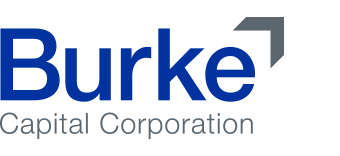Definition of Chaos*: Lack of a Succession Plan
“That small difference made all the difference.”
The Backstory
The client, a well-run group of manufacturing companies, built a solid financial condition that would be any bank’s poster child of a good customer. The 80-year-old founder controlled his empire with an iron fist, even taking care of the bookkeeping. The bad news was that he had not embraced the computer age, as all financial entries were made in pencil on 10-column paper. Plus he made all key decisions and was the bank’s only contact. Maybe you can guess the rest: he suddenly passed away.
The family rallied to get control of the business, appointing the 60-year-old son as CEO. A skilled product designer well versed in the manufacturing processes, he was in the dark about the rest of the operation.
The Call
A Burke Capital Corporation (BCC) partner received a panicky call from one of our Integrated Expert Network (IEN™) professionals, who was acting as the company’s controller. The bank had just frozen the line of credit and notified the company that it was moving the relationship to the Special Assets Department (a SAD story). Although the bank showed a lot of patience, a seven-figure loss (the company couldn’t “locate a few assets”) coupled with no quarterly financial statements drove it to its wit’s end and precipitated the drastic action.
The Assessment
Two BCC Partners quickly went in to take a financial snapshot. Of the six subsidiaries, two were performing well, one had potential to be turned around and three needed to be closed immediately. A formal board meeting was called to present the results. Fortunately, there was a board already in place, consisting of shareholders and outside professionals.
The CEO presented a comprehensive plan supported by BCC’s assessment. It recommended closing or selling the losing entities, supporting a temporary go-forward plan for the marginal performer, and embracing the profitable entities. Staffing and inventory reduction plans followed the overall strategic plan. The board understood the go forward plan and ultimately approved it.
The Results
Although the restructure plan was obvious enough, its execution became a long and arduous process. We initially compelled the cash to become positive, allowing the client to internally finance its operating requirements and buy time. Ironically, that took the pressure off the timely close of the losing operations, which we then had to force. We also instituted voluntary reductions in the outstanding line of credit balance.
The real key was completing a major culture shift from operating under the “founder model” (top-down, tightly controlled, autocratic, “seat-of-the-pants”) to a “sustainable growth model” (process and data-driven, with policies and procedures, metrics, accountability, and reporting). In this way, the success became repeatable and sustainable. Additionally, close, timely and accurate communications with all stakeholders allowed corporate credibility to be restored.
The upshot: the client remains with the bank under new workable loan terms, which allows it to focus on selling quality products and making money. The moral of the story is this: management succession and disaster recovery plans are a vital part of managing business risk. It’s often the unexpected small things that can trip up a business.
*Chaos theory is a field of study that analyzes the results of dynamic systems that are sensitive to initial conditions. Consider if you intended to fly to LA from the Bay Area, but started off going north instead. What are the possible outcomes? Small differences in initial conditions can yield widely diverging outcomes. — November 2016



